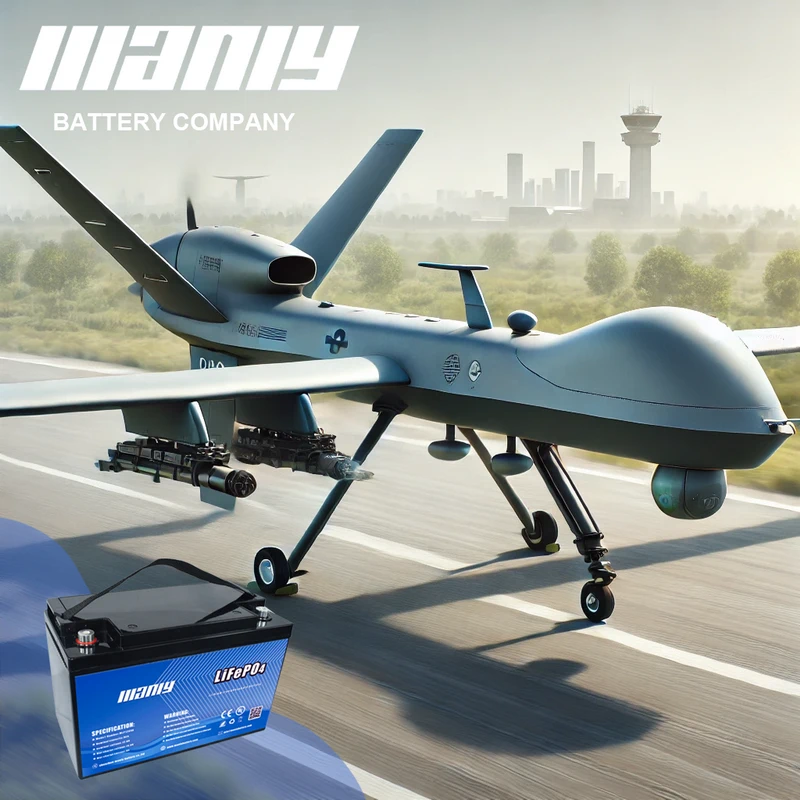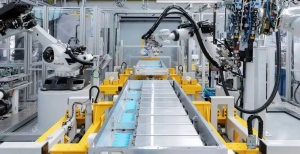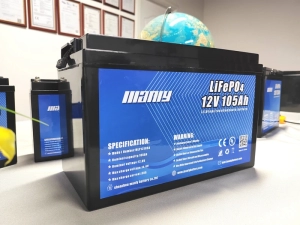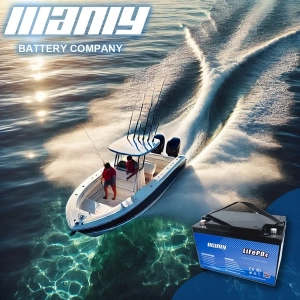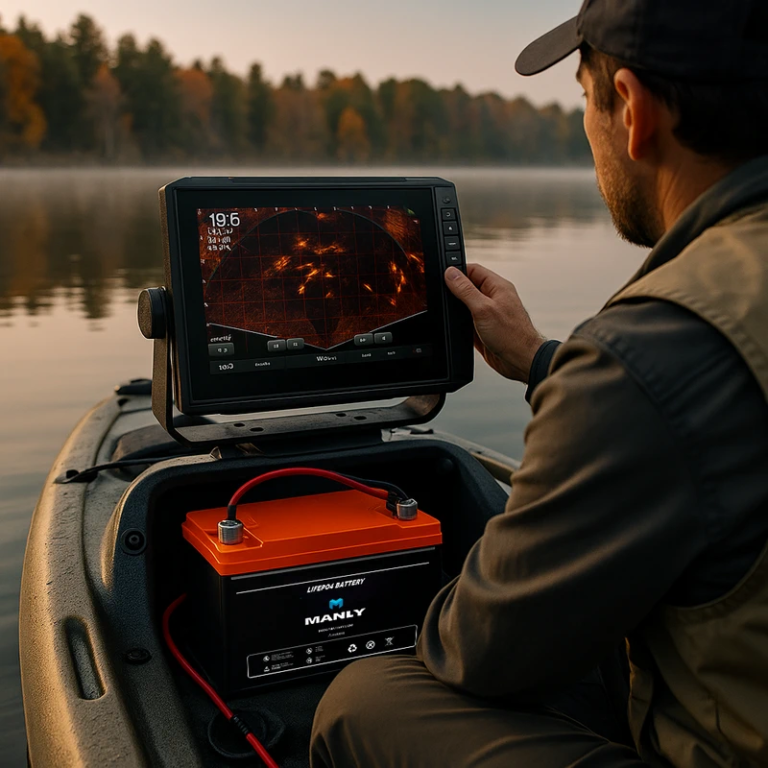O que é uma bateria militar?
Índice
- O que é uma bateria militar?
- Tipos de baterias militares
- Tecnologias -chave em baterias militares
- Aplicações de baterias militares
- 1. Equipamentos portáteis de eletrônicos e comunicações
- 2. Veículos aéreos não tripulados (UAVs) e drones
- 3. Veículos militares elétricos
- 4. Operações navais e submarinas
- 5. Sensores remotos e equipamentos de monitoramento
- 6. Equipamento médico de campo
- 7. Iluminação de campo
- 8. Poder de backup de emergência
- Considerações ao selecionar baterias militares
- Tendências futuras na tecnologia de baterias militares
- Por que escolher a bateria masculina para sua bateria militar precisa?
- Conclusão
- FAQ
- Hot Pesquisa
- Saiba mais sobre bateria
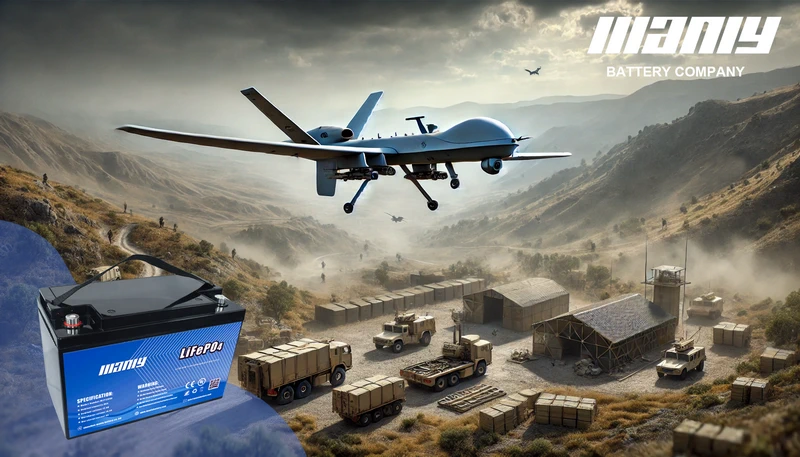
Tipos de baterias militares
Military batteries can be classified into two primary categories based on their rechargeability: non rechargeable and rechargeable batteries. Both types serve distinct functions, each tailored to different military applications where reliability and longevity are critical. Understanding the differences between these categories helps ensure the selection of the right power source for specific military needs.1. Baterias não recarregáveis paraMilitar
Non rechargeable batteries, also known as primary batteries, are designed for one-time use. Once these batteries are depleted, they cannot be recharged and must be disposed of and replaced. Military batteries in this category are often chosen for their long shelf life and ability to perform in high-demand, mission-critical situations.These batteries are typically used in equipment where reliability is key, and constant recharging is impractical. Some examples include Lithium Manganese Dioxide (LiMnO2) and Lithium Thionyl Chloride (Li-SOCl2). Both of these battery types are ideal for military devices that require long operational lifespans without regular maintenance, such as in remote sensors, emergency beacons, and other portable equipment.- Dióxido de manganês de lítio (limno2)As baterias são adequadas para uso em comunicações militares e outros sistemas que exigem alta densidade de energia e uma produção estável por períodos prolongados.
- Cloreto de lítio tionil (li-socl2)As baterias oferecem densidades de energia ainda mais altas, tornando -as perfeitas para dispositivos militares pequenos e leves que precisam funcionar em ambientes extremos, como sistemas de satélite e equipamentos de vigilância.
2. Baterias recarregáveis paraMilitar
Baterias recarregáveis are also known as secondary batteries and are designed to be reused multiple times, offering significant advantages over their non-rechargeable counterparts. These batteries are particularly important in modern military equipment, as they reduce the need for frequent replacements and can provide a more sustainable and cost-effective power solution.Lithium Ion (Li-ion) and Lithium Ion Polymer (LiPo) batteries are common examples of rechargeable military batteries. These batteries are favored for their ability to deliver high energy output and rapid recharge times, which are essential in military scenarios where downtime must be minimized.- Íon de lítio (li-íon)As baterias são amplamente utilizadas em aplicações militares, como drones, veículos elétricos e equipamentos de comunicação devido à sua alta densidade de energia e vida útil mais longa. Eles podem suportar milhares de ciclos de carga e fornecer o poder necessário para operações exigentes.
- Polímero de íons de lítio (lipo)As baterias oferecem o benefício adicional de um design mais flexível, que permite que sejam usados em uma variedade de formas e tamanhos. Essa flexibilidade é vantajosa para dispositivos militares compactos e portáteis que exigem uma fonte de energia leve, mas poderosa.
Tecnologias -chave em baterias militares
Military batteries stand out due to the advanced technologies that power them, providing reliability and efficiency under the most demanding conditions. These batteries are engineered to support a range of military equipment, including communication systems, UAVs, electric vehicles, and advanced weaponry. The high-performance requirements of military operations demand cutting-edge technology, ensuring optimal functionality even in extreme environments. Here’s a look at some of the key technologies used in baterias militares.1. Baterias de dióxido de enxofre de lítio (Liso2)
Lithium Sulfur Dioxide (LiSO2) batteries are widely used in military applications due to their high energy and power density. These batteries offer a long shelf life and are capable of maintaining performance over a broad temperature range, which makes them ideal for use in harsh environments where reliability is critical. The unique chemistry of LiSO2 batteries allows them to operate efficiently in both extreme heat and cold, which is especially important for military missions conducted in diverse geographic locations.Applications of LiSO2 batteries in the military include use in portable equipment such as field radios, satellite systems, and surveillance devices. Their high energy density ensures long operational times for devices that are essential during extended missions, and their ability to function in extreme temperatures allows them to be used in challenging terrains, such as the Arctic or desert conditions.2 Baterias de íon de lítio (lítio)
Lithium Ion (Li-ion) batteries are one of the most commonly used technologies in military batteries due to their efficiency, high energy density, and reliable performance. These batteries are favored for their ability to operate in a wide temperature range, from -51°C to 75°C, making them ideal for use in military equipment exposed to fluctuating weather conditions. Additionally, Li-ion batteries have a longer lifespan compared to older technologies like Nickel Cadmium (NiCd) batteries, offering higher reliability and reducing the need for frequent replacements in the field.In military applications, Li-ion batteries are commonly used to power drones, unmanned aerial vehicles (UAVs), and electric vehicles. Their lightweight nature also makes them particularly attractive for use in portable electronics and advanced weapon systems, where minimizing weight is crucial for enhancing mobility and efficiency. Furthermore, Li-ion batteries provide fast charging capabilities, reducing downtime for military equipment that needs to be ready at a moment's notice.3. Baterias de Cádmio de Níquel (NICD)
Nickel Cadmium (NiCd) batteries, though now largely replaced by newer technologies like Li-ion, still offer some key benefits that make them useful in certain military applications. One of the main advantages of NiCd batteries is their robust performance in extreme temperatures, especially in very cold conditions. This makes them ideal for powering equipment used in Arctic or high-altitude environments where Li-ion batteries may struggle to function effectively.Another benefit of NiCd batteries is their ability to deliver a high discharge rate, making them suitable for devices that require quick bursts of energy, such as tactical radios or searchlights. However, NiCd batteries do have some drawbacks, including their relatively lower energy density compared to Li-ion batteries and the memory effect, which can reduce their effective capacity if not properly maintained.While NiCd batteries are still used in specific military contexts, they are increasingly being phased out in favor of more efficient and long-lasting solutions like Li-ion batteries.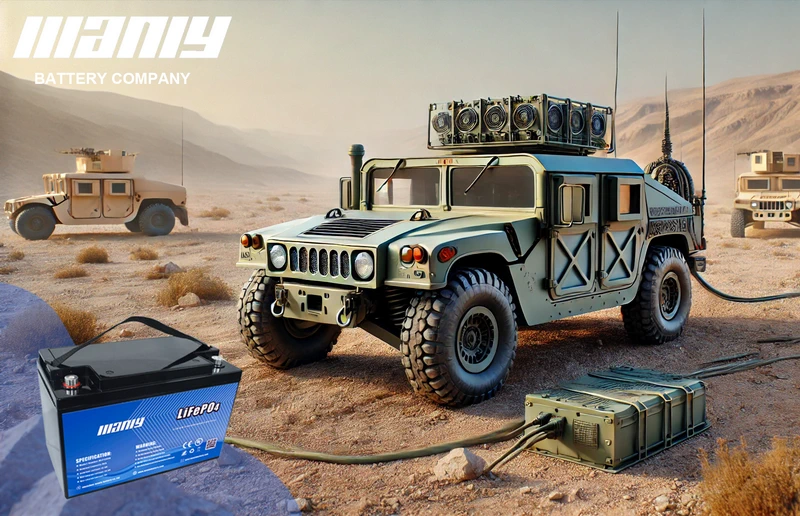
Aplicações de baterias militares
Military batteries play an essential role in powering a wide variety of military equipment and ensuring the success of operations. From communication tools to electric vehicles, these batteries are crucial for maintaining operational continuity in remote and challenging environments. Here’s a closer look at the diverse applications of military batteries and how they support different sectors within the military.1. Equipamentos portáteis de eletrônicos e comunicações
Military batteries are at the heart of powering portable electronics and communication devices, which are essential for soldiers in the field. These devices, including radios, night vision goggles, GPS units, and smartphones, rely on military batteries to ensure seamless communication and operational readiness. The ability to stay connected with command centers, coordinate movements, and access critical information is vital during missions, and military batteries provide the necessary power to maintain these capabilities for extended periods.For example, lithium-ion and lithium-polymer batteries are commonly used in military batteries for communication tools due to their light weight, long life, and high energy density, allowing troops to rely on them for long-term operations without the need for frequent replacements.2. Veículos aéreos não tripulados (UAVs) e drones
The use of military batteries in unmanned aerial vehicles (UAVs) and drones has transformed modern reconnaissance, surveillance, and combat missions. Drones, which are increasingly used for intelligence gathering, targeted strikes, and surveillance, depend on high-performance military batteries to provide the long flight times and rapid recharging required for mission success.Lithium-ion (Li-ion) batteries are typically used in UAVs due to their lightweight nature and high energy capacity. This technology enables drones to fly for extended periods, enhancing their operational range and efficiency. Additionally, the ability to recharge quickly minimizes downtime, making drones more effective in fast-moving military operations.3. Veículos militares elétricos
Electric military vehicles are gaining traction due to their low operational costs, reduced emissions, and stealth advantages. Military batteries provide the necessary power to electric vehicles, making them more efficient and environmentally friendly compared to traditional fuel-powered options.These vehicles, including electric tanks, trucks, and reconnaissance vehicles, benefit from the high energy density and quick charging capabilities of lithium-ion batteries, which power everything from propulsion to electronic systems. The quiet operation of electric military vehicles also offers a tactical advantage, allowing for stealthy movements in sensitive environments where noise could compromise security.4. Operações navais e submarinas
In naval vessels and submarines, military batteries are critical for providing reliable power to essential systems, such as propulsion, communication, and navigation. These batteries are designed to perform under extreme conditions, including high pressure, low temperatures, and long durations underwater.Lithium-ion batteries are often used in modern submarines due to their high energy density, long life, and ability to recharge efficiently. Their capacity to provide sustained power in confined spaces makes them ideal for use in submarines, where operational efficiency is paramount, and resources are limited.5. Sensores remotos e equipamentos de monitoramento
Military batteries are vital for powering remote sensors and monitoring equipment used in military operations. These devices, which are often deployed in challenging terrains for surveillance, environmental monitoring, or enemy detection, require durable batteries that can withstand harsh conditions and provide long-term reliability.Lithium-thionyl chloride (Li-SOCl2) batteries are frequently used in remote sensors due to their ability to operate over a wide temperature range and their extended shelf life, which ensures continuous operation for months or even years without needing a battery replacement.6. Equipamento médico de campo
In combat situations, military batteries provide the power needed for field medical equipment, such as portable defibrillators, monitoring devices, and other life-saving tools. These devices often need to be highly portable and reliable, especially when deployed in remote or dangerous areas where access to power is limited.Lithium-ion batteries are commonly used to power these devices, offering the combination of high energy density, long cycle life, and light weight necessary for military medical teams to deliver care in the field.7. Iluminação de campo
Military operations often take place in low-light conditions, and military batteries are used to power portable and mobile lighting systems, ensuring safety and visibility in tactical environments. These systems include flashlights, headlamps, and larger lighting units for camps and patrols.Lithium ion batteries are frequently used for these applications, as they provide a compact, rechargeable solution that can support high-intensity lighting for extended periods. The ability to easily recharge these batteries makes them ideal for operations in areas with limited access to power sources.8. Poder de backup de emergência
In critical situations, military batteries serve as backup power sources to ensure continuity of operations during emergencies. These batteries provide essential power to military infrastructure and equipment in case of a power outage or other disruptions, allowing operations to continue seamlessly.Sealed lead-acid (SLA) batteries are often used in these applications due to their reliability, robustness, and ability to store large amounts of energy, making them ideal for emergency backup in military bases and field stations.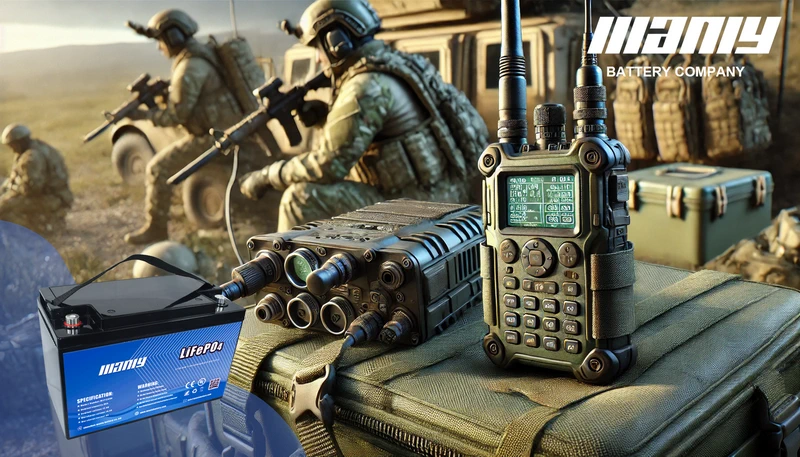
Considerações ao selecionar baterias militares
Selecting the right military battery is crucial for ensuring operational success in demanding military environments. Factors like energy density, durability, environmental adaptability, safety, and cost are key to determining which military batteries are best suited for different applications. Here are the key considerations when selecting military batteries.1. Densidade energética
Energy density refers to the amount of energy a battery can store in relation to its size or weight. For military batteries, higher energy density is essential as it allows military equipment to run for longer periods without frequent recharging, especially in energy-intensive operations.In military applications, where extended mission times are often necessary and charging stations are scarce, batteries with high energy density are critical. Equipment such as communication devices, unmanned aerial vehicles (UAVs), and medical tools all benefit from military batteries with high energy density, as these ensure continuous operation over long durations. Lithium ion and lithium-polymer batteries, known for their high energy density, are commonly used to power military devices in remote locations where maintaining a power source is a priority.- Exemplo:A densidade energética das baterias de íons de lítio normalmente varia de 150 a 250 wh/kg. Isso permite que dispositivos como os UAVs operem mais tempo, com muitos drones agora capazes de voar por mais de 10 horas com uma única carga - melhorando as capacidades operacionais e a redução do tempo de inatividade.
2. Durabilidade e confiabilidade
The durability and reliability of military batteries are paramount, especially as they are often exposed to extreme conditions such as temperature extremes, humidity, physical shocks, and vibrations. Batteries used in military vehicles, field equipment, and combat systems must withstand these harsh environments without compromising their performance or safety.For instance, lithium ion batteries are increasingly being used in military applications for their ability to endure demanding conditions. These batteries can continue operating in temperatures ranging from -40°C to 60°C (-40°F to 140°F), ensuring they remain reliable in harsh environments, including those in the Arctic or desert.- Exemplo: The ability of lithium ion batteries to perform reliably under stress is crucial for unmanned ground vehicles (UGVs) and communication systems that operate in remote, rugged locations. The military's use of lithium-ion batteries in these systems has significantly improved the reliability of such devices in the field, offering a combination of long life and high performance.
3. Recursos de segurança
Safety is a top priority when selecting military batteries, as these batteries are often used in high-risk environments. The risk of thermal runaway, short-circuiting, or explosions must be minimized to ensure the safety of both military personnel and sensitive equipment.Military batteries need to include advanced safety mechanisms such as thermal stability, overcharge protection, and safeguards against overcurrent. These features are essential for preventing incidents such as fires or explosions that could occur if batteries are exposed to extreme temperatures or physical damage.- Exemplo:As baterias de íons de lítio, comumente usadas em operações militares, estão equipadas com sistemas de gerenciamento de baterias (BMS) que monitoram a temperatura da célula, a tensão e a corrente para evitar superaquecimento e fuga térmica. Isso os torna mais seguros para uso em zonas de combate, onde temperaturas extremas e manuseio grosseiro são comuns.
4. Custo e valor
While military batteries often come with higher upfront costs compared to commercial batteries, it’s essential to balance cost with long-term performance and reliability. Military organizations must factor in the battery’s lifespan, efficiency, and maintenance needs when determining its overall value.For example, lithium ion batteries have a higher initial cost than traditional lead-acid batteries, but their longer lifespan and higher performance make them more cost-effective over time. These batteries typically last 3 to 5 times longer than lead-acid batteries, reducing the need for frequent replacements and lowering long-term operational costs.- Exemplo:Em uma frota militar típica, a substituição de baterias de íons de lítio a cada 5 anos, em vez de a cada 1 a 2 anos, como nas baterias de chumbo-ácido, leva a uma economia substancial em substituições e reduz o tempo de inatividade operacional.
5. Impacto Ambiental
Sustainability is increasingly a priority in military operations, and the environmental impact of military batteries is under greater scrutiny. As the military seeks to adopt more eco-friendly solutions, minimizing the carbon footprint of military batteries has become crucial.To reduce environmental impact, manufacturers are exploring more sustainable materials and improving recycling processes. For example, lithium ion batteries are more energy-efficient and have a smaller environmental footprint than traditional lead-acid batteries, which are more difficult to recycle and can lead to environmental damage when improperly disposed of.- Exemplo:Os militares estão cada vez mais integrando os sistemas de energia solar em suas operações, reduzindo a dependência de fontes de energia tradicionais. As baterias de íons de lítio são frequentemente usadas em conjunto com esses sistemas para criar soluções de energia sustentável que podem ser facilmente reabastecidas em campo, apoiando operações em áreas remotas e minimizando o impacto ambiental.
6. Manutenção e logística
Effective maintenance and logistics are crucial for the smooth operation of military batteries. These batteries must be easy to maintain, especially when deployed in remote locations where access to replacement parts or skilled personnel may be limited.For military batteries to be truly effective, they need a long lifespan and should be easily replaceable or repairable in the field. Ensuring that spare parts are readily available and that batteries are resistant to physical damage during transport is essential for maintaining operational efficiency.- Exemplo:As baterias de íons de lítio têm uma vida útil significativamente mais longa que as baterias tradicionais e requerem manutenção menos frequente. Isso reduz o ônus logístico de ter que substituir ou reparar baterias durante missões estendidas. Além disso, com o uso de tecnologias de carregamento inteligente que fornecem monitoramento de saúde da bateria em tempo real, as unidades militares podem otimizar o uso da bateria e evitar falhas inesperadas.
Tendências futuras na tecnologia de baterias militares
The global military battery market is experiencing rapid growth, driven by the increasing demand for advanced power systems. With a projected market value of $8.32 billion in 2024 and an expected increase to $13.59 billion by 2030, the military power solutions market is expanding at a compound annual growth rate (CAGR) of 8.52%. This growth reflects the need for higher-performing, more energy-dense systems that support military operations worldwide, from remote outposts to advanced combat scenarios. Innovations in military batteries aim to improve energy density, miniaturization, and sustainability, all while adhering to the high-performance and safety standards required in military settings.1. Baterias de estado sólido
One of the most promising advancements in military battery technology is the development of solid state batteries. These batteries use a solid electrolyte instead of a liquid one, which not only makes them safer but also more durable. Solid state batteries are less likely to catch fire or overheat compared to traditional lithium ion batteries, which is crucial for military applications where safety is paramount.The transition to solid-state batteries could revolutionize military batteries by offering higher energy densities, meaning smaller and lighter batteries that can deliver more power. These batteries also have the potential for faster charging times and longer lifespans, further enhancing the performance of military systems, including drones, electric vehicles, and communication devices. With the growing need for reliable, high-energy power sources, solid state batteries could be a game-changer for military technology in the coming years.2. Sistemas de energia híbrida
As the demands of modern warfare become increasingly complex, hybrid energy systems combining multiple power sources are gaining attention in military batteries. These systems integrate lithium ion batteries with other energy sources, such as fuel cells or supercapacitors, to provide enhanced performance and greater operational endurance.Hybrid systems could improve military batteries by offering better fuel efficiency, faster charging times, and increased reliability in diverse conditions. This flexibility allows military forces to extend operational periods, ensuring that essential equipment remains powered for longer without the need for constant recharging or battery replacements. By incorporating renewable energy sources and advanced technologies, hybrid energy systems can provide a sustainable and flexible solution to meet the needs of modern military operations.3. Soluções avançadas de carregamento
As military batteries become more integral to defense operations, the need for faster and more efficient charging solutions grows. Innovations in advanced charging technology are being developed to support military operations where time is a critical factor. These advancements include wireless charging and ultra-fast charging systems, which significantly reduce the time needed to recharge military batteries in the field.Faster charging times will ensure that essential equipment, such as communication systems, unmanned vehicles, and medical devices, remain operational without delays. This is especially important in combat zones where every minute counts. As military batteries evolve to meet the needs of modern warfare, these advanced charging technologies will help maintain the operational readiness of military forces, even in the most demanding environments.